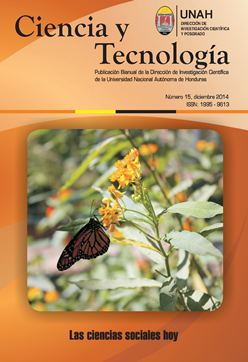Prevalence of genotypic resistance to antiretroviral drugs in HIV-positive patients in Tegucigalpa
DOI:
https://doi.org/10.5377/rct.v0i15.2174Keywords:
drug-resistance, acquired resistance, mutations, HIV-1Abstract
The objective of this study was to determine the prevalence of HIV drug-resistance in treated and untreated patients. One-hundred samples of HIV-positive patients of Tegucigalpa were analyzed, 50 samples from patients prior to antiretroviral therapy and 50 samples from patients on antiretroviral therapy with treatment failure.
HIV-1 pol sequences were generated to determine the presence of drug resistance mutations using the Stanford calibrated population resistance tool according to the WHO Surveillance Drug Resistance Mutations for untreated patients and the Stanford Database list of mutations for treated patients.
The results shows that drug-resistance mutation prevalence in patients before treatment initiation was 19 % [IC 95 %: 9-33%], 8.3 % for NRTI, 12.5 % for NNRTI and 6.25 % for PI; the most common mutation founded were: M184V, K103N, M46I. The prevalence of drug-resistance mutations in patients on therapy was 82 % [IC 95 %:60-90%], 58 % for NRTI, 74 % for NNRTI, and 22 % for PI.
In conclusions, we observed a significance increase in the prevalence of drug-resistance mutations in untreated patients compared with previous studies, which is of great concern because it limits the effectiveness of first-line treatment. Although the prevalence of acquired resistance in patients with therapeutic failure remains slightly constant remains high, requiring treatment changes to second or third line in these patients, causing an economic impact on public health.
Revista Ciencia y Tecnología, N° 15, December 2014: 147-160
Downloads
1127
Downloads
Published
How to Cite
Issue
Section
License
© Revista Ciencia y Tecnología
Authors who publish in this journal accept the following conditions: In accordance with the legislation of copyright, Revista Ciencia y Tecnología, recognizes and respects the moral right of authors, as well as the ownership of the patrimonial right, which will be ceded to the magazine for its diffusion in open access in printed version and in digital format. By being part of multiple indexers, databases and reference systems, the articles published by Revista Ciencia y Tecnología will be visible and will be downloaded from these websites, indicating, in all cases, the authorship of the articles, the date of publication and the number of the journal to which they correspond.




